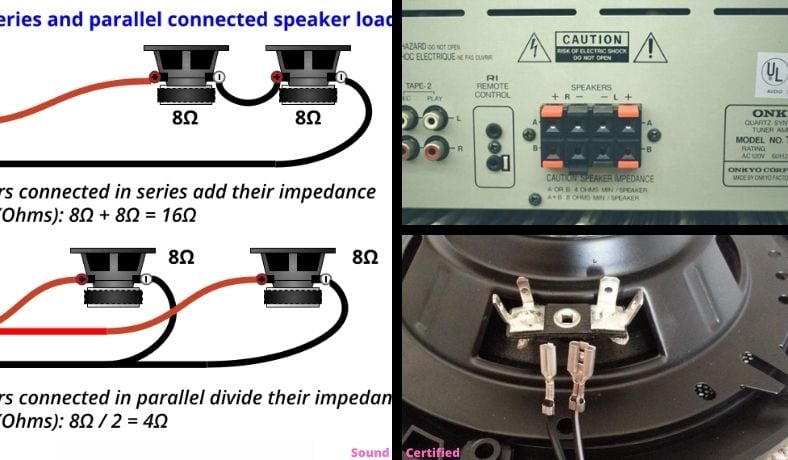In this article I’ll cover all the details needed for connecting two speakers to one stereo or amplifier channel output. Despite some claims out there, it’s not as simple as they’d have you believe!
Read on and I’ll explain why. I’ll show you the pros and cons of series vs parallel speakers along with how to get the best sound or simplest connection based on what you need.
Contents
Can I connect 2 speakers to one output?
The type of speaker and how it’s connected can affect the quality of sound you’ll get as you’ll see below.
What happens if you connect two speakers to one channel?
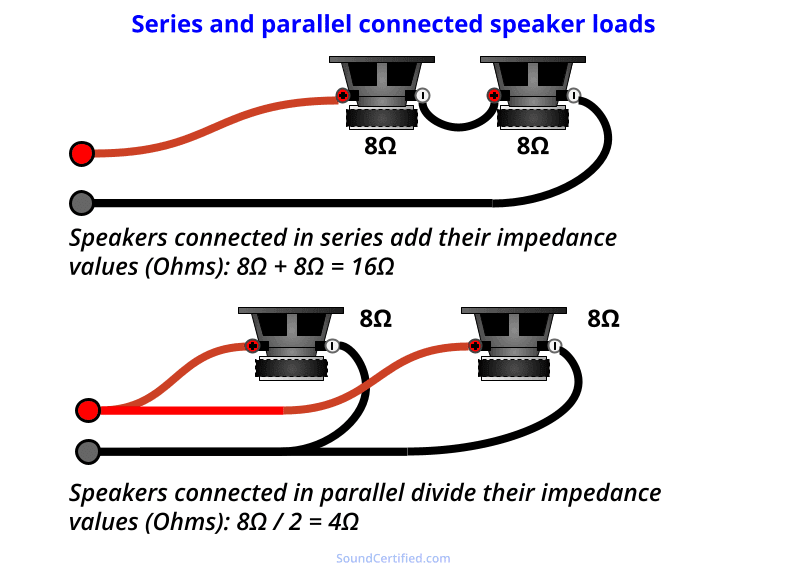
When two speakers are connected to one channel it will see a speaker load (total Ohms load) that’s lower or higher than one speaker alone.
This is because either more or less electrical current is flowing depended on how they’re connected. The end result is that the amplifier does more or less work.
- For speakers connected in parallel, the total Ohms impedance is lower. It is the speaker Ohms divided by the number of speakers. More electrical current will flow if the radio or amplifier can supply it.
- For speakers connected in series, the total Ohms impedance is higher. It is the total of the speaker Ohms all added together. As the total resistance (speaker impedance, in Ohms) is increased, this means less electrical current will flow.
If the total Ohms load seen by the output channel is too low the audio device can overheat and suffer permanent damage.
If the Ohms load is higher, it’s safe – the amp will simply produce less total power. Each speaker will receive less power than it would when connected alone (usually 1/2 to 1/4 of the full wattage).
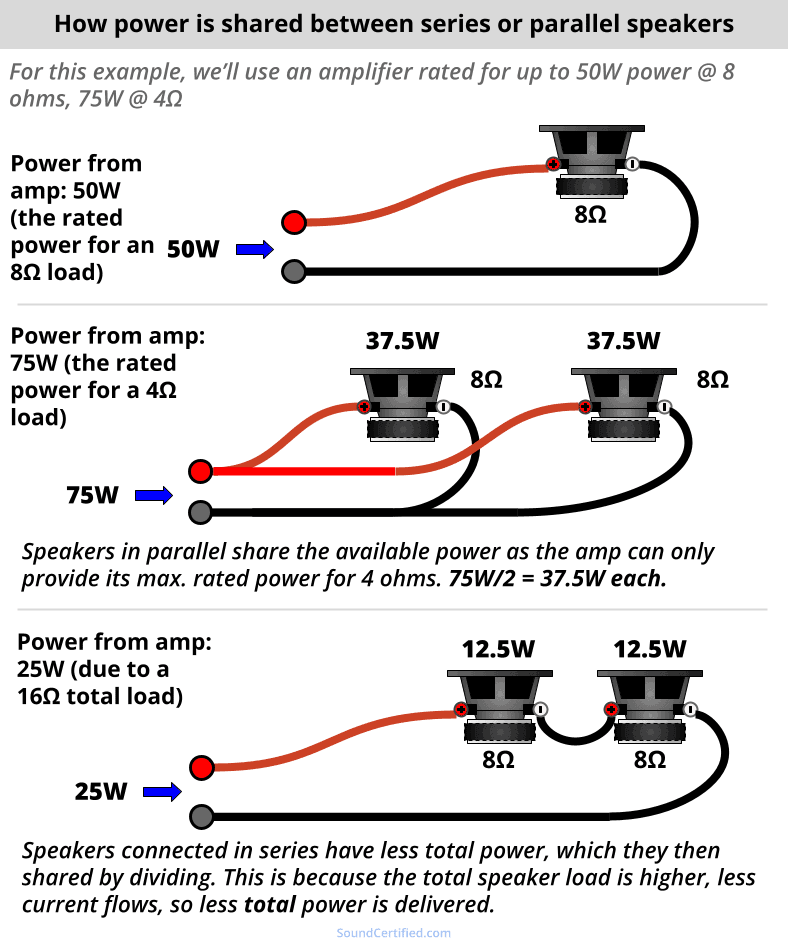
One thing to know is that you can’t get free power – connecting two speakers to one output channel means they will have to share the available power.
Remember these basics:
- Parallel speakers share the output power for the total speaker load. For example, connecting two 4Ω speakers in parallel means a total of 2 ohms. Each speaker would then get 1/2 of the rated power output at 2 ohms.
- Series connected speakers receive less power overall because the total power to all is lower than parallel speakers. For example, two 4 ohm speakers in series add to an 8 ohm total load. Power output at 8 ohms is 1/2 that of 4 ohms (due to Ohms Law for power), with each speaker having 1/2 of that.
When connecting 2 speakers to one output channel it’s a compromise you have to live with. A car stereo, home AV receiver, or home or car amplifier is often designed with one speaker per channel in mind.
How to connect 2 speakers to one output
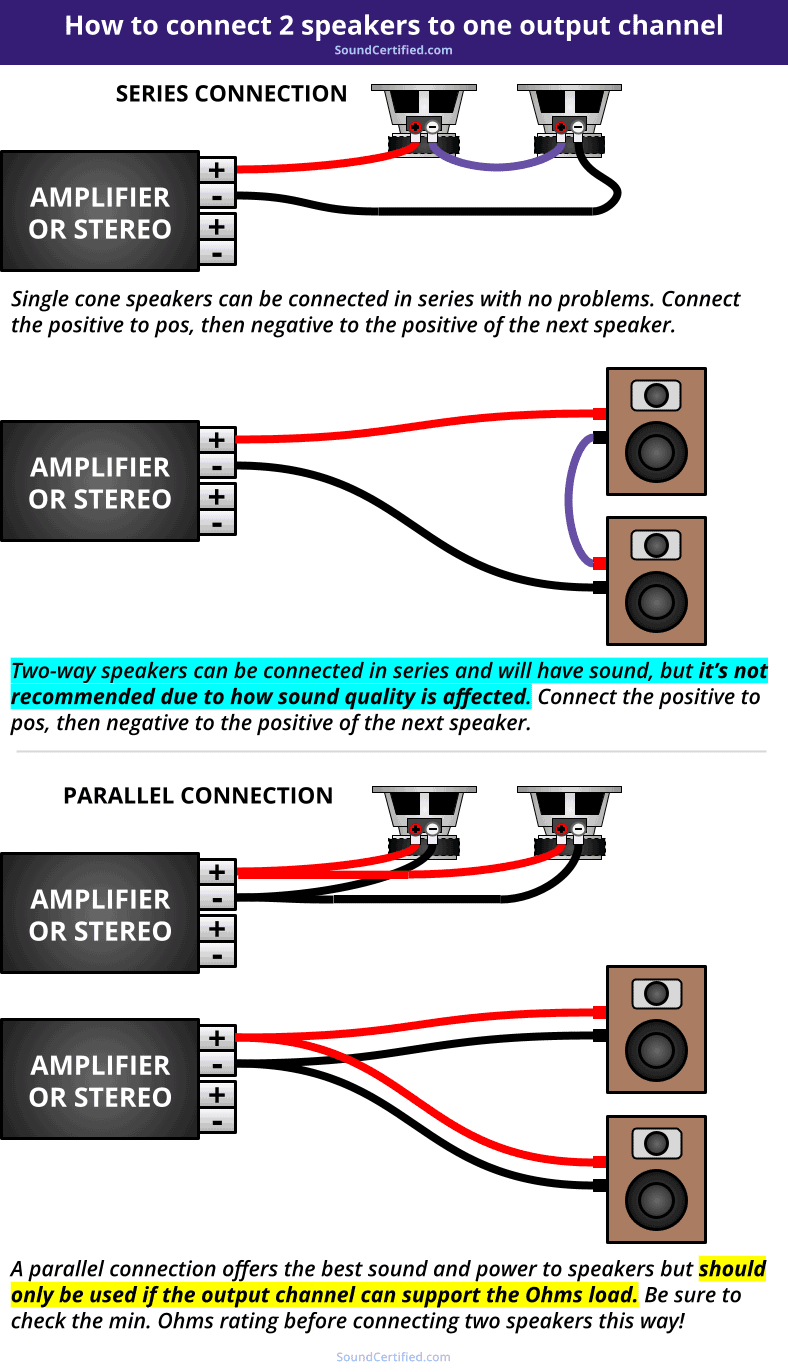
Steps to connect multiple speakers to one output in parallel or series
Series:
- Strip the wire insulation to bare wire and connect one speaker wire to the positive terminal of the output then to the positive terminal of the first speaker.
- Keep (or cut) enough length to reach the second speaker. Connect the negative terminal of the first speaker to the positive terminal of the second speaker.
- Connect the negative terminal of the last speaker to the negative terminal of the output.
Parallel:
- Connect a speaker wire to the positive terminal on each speaker. Both speaker’s positive wires should connect to the same positive terminal.
- Connect a speaker wire to the negative terminal on each speaker. Both should connect to the same negative terminal at the output at the amp.
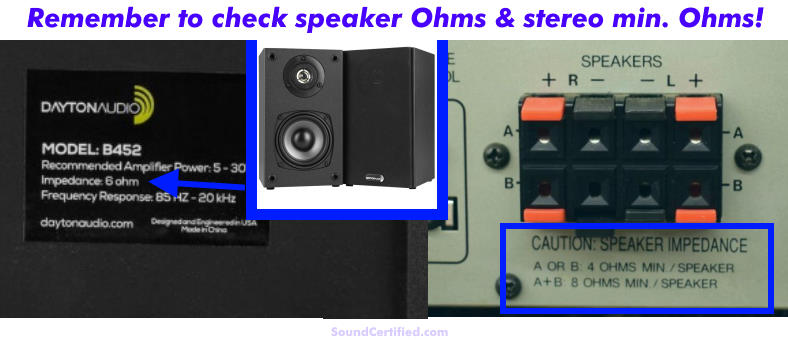
When connecting two speakers in parallel to an output, remember to divide the speaker Ohms rating by two to know how much your receiver, radio, or amplifier will need to be able to handle.
When to use a parallel connection or a series connection for speakers
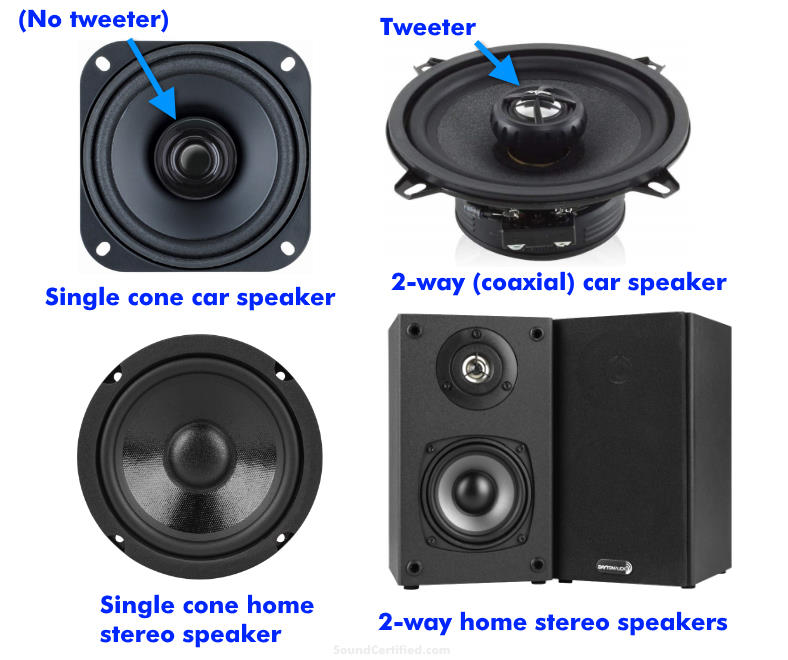
Image showing single cone vs 2-way/coaxial speakers.
Single cone speakers don’t have an additional tweeter like you’ll find in a 2-way stereo pair speaker set or car audio coaxial 2-way speakers. While that might not seem important at first, 2-way speakers always use at least a tweeter crossover and in many cases a woofer crossover as well.
Speaker crossovers use inductors and capacitors which will affect the sound when connected in series as I explain in the next section.
Here are some guidelines to follow for series vs parallel speaker wiring:
- If your radio, amp, or AV receiver can handle the Ohms load of two speakers in parallel that’s the better option. You’ll get more power to each speaker vs. series wiring.
- When that’s not an option, or if you’re unsure, connecting speakers in series is a safe bet. They’ll receive less power but there’s no risk of damaging the output electronics.
- Connecting 2-way or 3-way speakers in series will work to produce sound but the sound quality will suffer. I’ll explain more in the next section.
- If sound quality isn’t a big deal for you and your amplifier or stereo can’t support the Ohms load of your speakers in parallel, wiring them in series is ok in most cases.
Why 2-way or 3-way speakers have worse sound in series
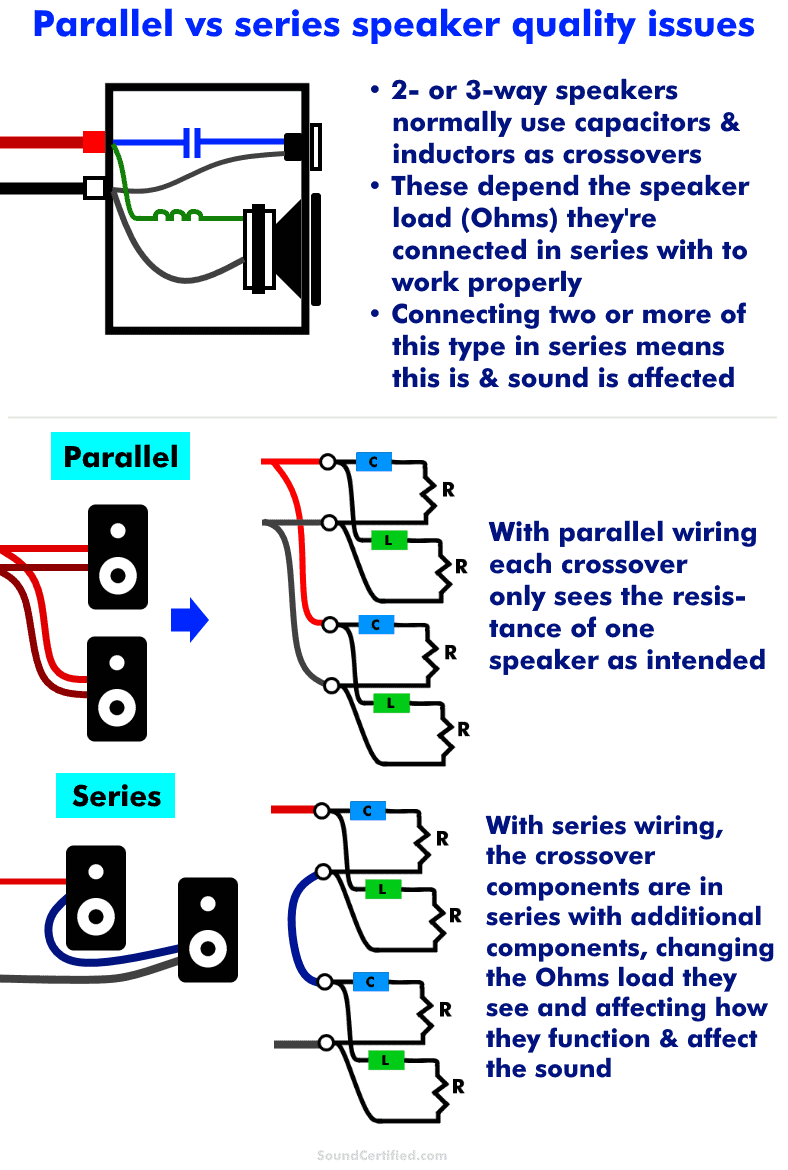
As I mentioned earlier, connecting 2-way or 3-way speakers in series usually isn’t a great idea. That’s because they use capacitors and inductors as speaker crossovers to control the sound directed to the tweeter speaker and the woofer.
The problem is that a speaker crossover expects to see a fixed speaker Ohms amount in order to work as expected. When that speaker Ohms impedance changes, something called crossover shift happens. This simply means that the crossover frequency will change – and it can change a lot!
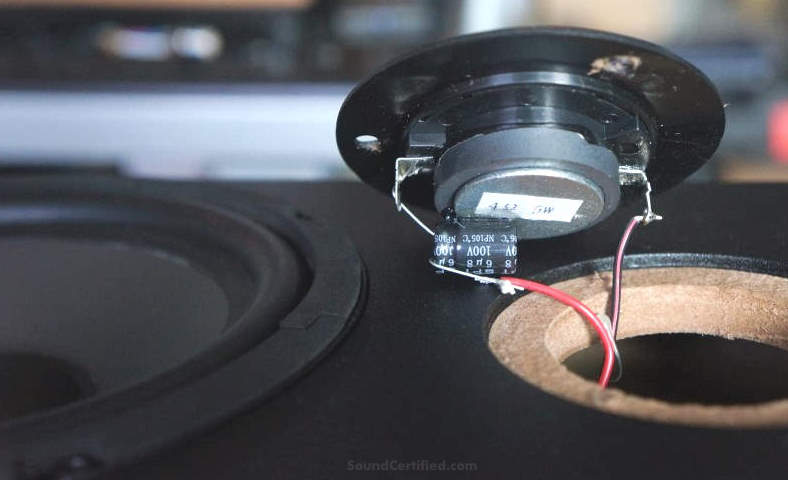
Example of a 2-way speaker’s tweeter with its capacitor crossover attached.
For example:
- If a tweeter and its crossover are connected in series with another similar tweeter & crossover, the Ohms value can double. The crossover frequency will go down by twice as much, letting unwanted midrange, etc through.
- If a woofer has an inline crossover inductor, connecting two speakers in series will double the total speaker load, meaning it will be affected as well.
That’s not to say you can never connect a 2-way home or car speaker in series, and in some cases it’s not a huge deal, but it shouldn’t be your first choice when you’ve got other options.
Fortunately, there’s a great workaround that’ll give you the best of both worlds (the right speaker load and the same sound quality).
How to use 2-way speakers in parallel for great sound AND no Ohms problems
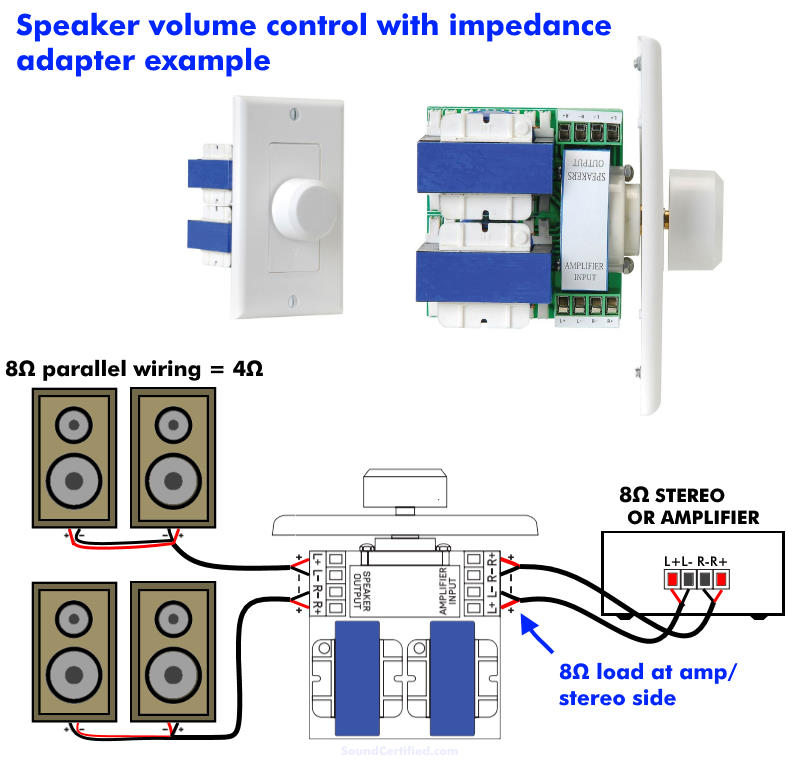
Example of a speaker volume control with an impedance adapter connected to a 2 channel amp. With this type of adapter two 8Ω speakers wired in parallel (4Ω total) will appear as one 8 ohm speaker to the source.
You can use an impedance adapter to ensure each speaker is wired in parallel on the output side for best sound quality and so the amp or stereo sees the correct load impedance.
An impedance adapter uses small transformers to convert the input and output sides to match the impedance load. Depending on the options, some even allow using 4 ohm speakers with an 8 ohm amp and vice versa.
They’re also really handy when using additional speaker pairs in your backyard or pool via a speaker selector switch.
Why is it bad if the speaker impedance is too low?
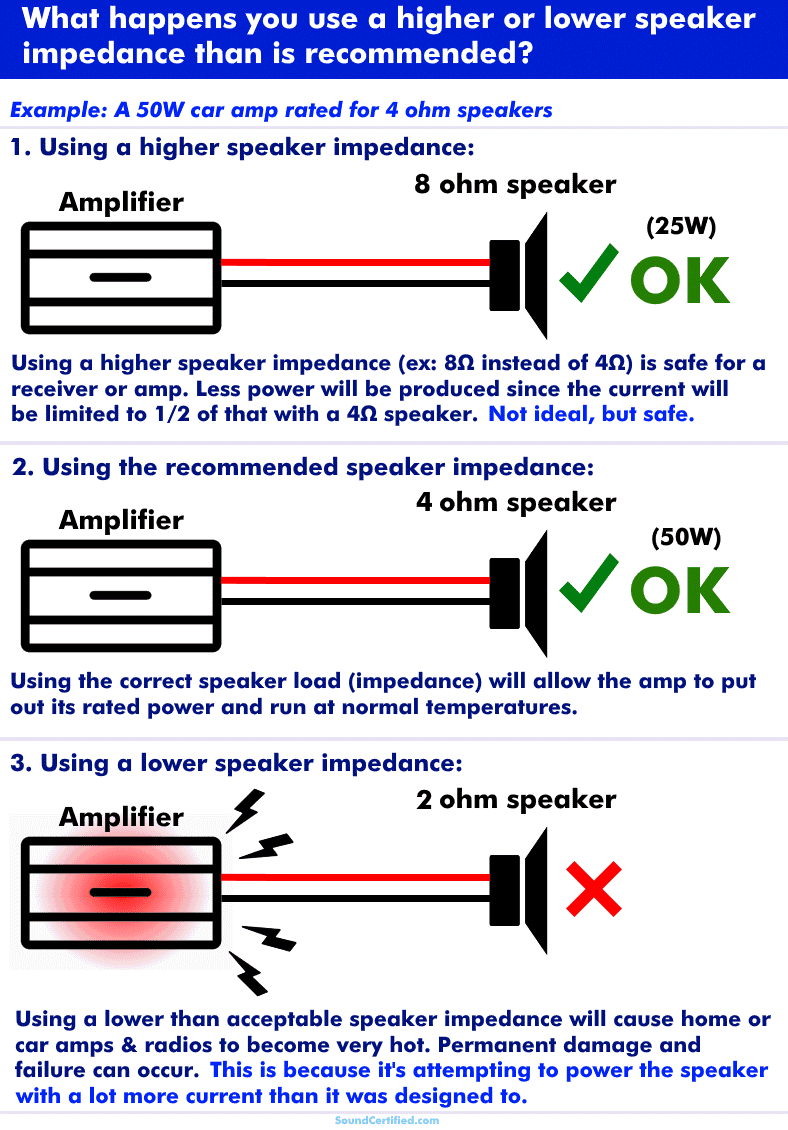
Using a lower speaker Ohms load than a stereo or amplifier is rated for is bad because it causes the radio or amplifier to attempt to put out much more current than it’s rated for.
When the audio output transistors are forced to try and handle too much current due to a lower speaker Ohms load they become super hot and start to break down. It doesn’t take long before the damage is permanent and they no longer produce sound at the speaker output.
